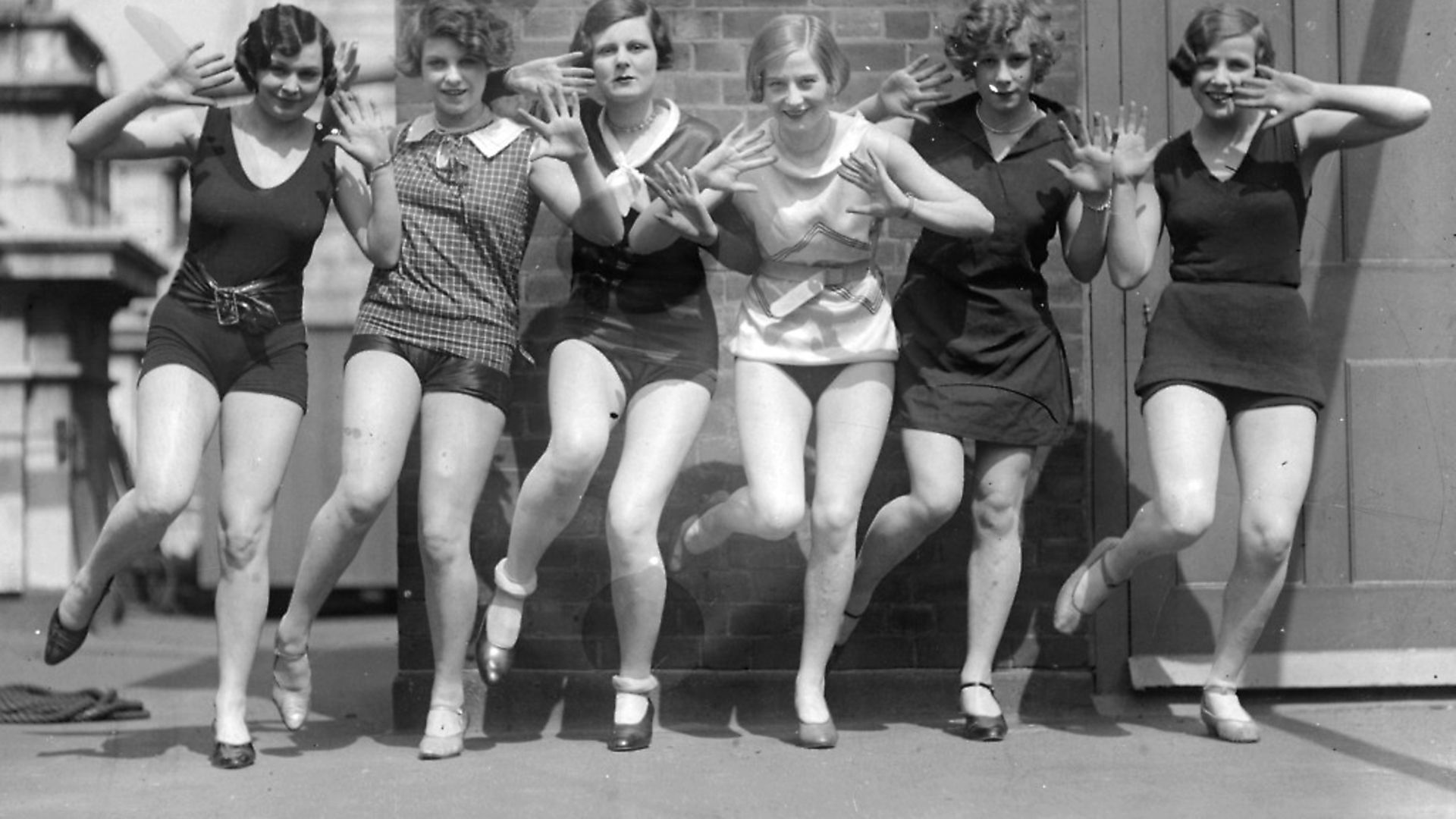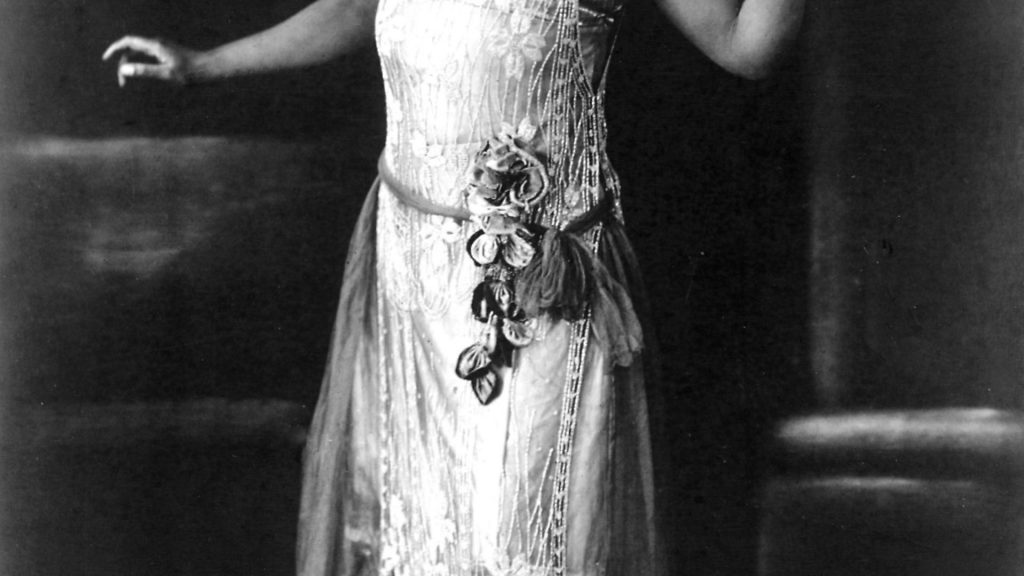
The year when music came with a sense of optimism, Orientalism – and often surrealism – as pharaohs and fruit provided the inspiration.

America was on the brink of the mass media age in 1923. On March 3 the first issue of Time magazine appeared, costing 15 cents. The same month, work started on Los Angeles Times publisher Harry Chandler’s Hollywoodland real estate development, and an advertising sign in 30-foot wide lit-up letters was erected soon after, later to be shortened and become the symbol of the American film industry and cinematic glamour.
Walt Disney arrived in California that summer looking for a distributor for a series based on the 12-minute film, Alice’s Wonderland, he had made earlier in the year. He was successful and he and brother Roy began operating as Disney Brothers Cartoon Studio – the Disney company was born.
Meanwhile, the four Polish-born Wonskolaser brothers had formally incorporated their growing film company as Warner Bros. Pictures in April. The BBC had received a broadcasting licence in January, launching the Radio Times and carrying out its first international broadcasts before the year was out.
It was the growing mass media that made the craze of the year one on a scale never before seen. In late November 1922 British archaeologist Howard Carter had discovered the tomb of Tutankhamun, and the Times had paid £5,000 to the expedition’s funder, Lord Carnarvon, for exclusive access to the tomb and picture rights.
They were the driving force behind the ‘King Tut Fever’ that broke out, as popular culture was confronted with an aesthetic that spoke to the times, feeding an interest in Orientalism that was already in vogue, while the glittering opulence of the finds were seductive in an age that embraced decadence as a mark of post-war economic recovery.
With the unsealing of the burial chamber in February 1923 and the revelation of the pharaoh’s golden burial mask, the craze took on feverish proportions. The cream of Parisian jewellery-making, including Cartier and Van Cleef & Arpels, began making whole collections of jewellery that blended Art Deco with Egyptian motifs.
Meanwhile, at the other end of the consumer market, racy pulp novels picked up the theme with gusto, taking the sexual overtones of the mystic east that had been so popular in the form of Edith Maude Hull’s novel The Sheik (1919) and the Valentino-starring film version of two years later. Ultimately, in this age of burgeoning celebrity, of which Valentino was the non plus ultra, even the 3,000 year-dead Boy King became a star.
Music didn’t remain untouched by the Tut-mania, as writers of early recording star Eddie Morton’s big ragtime hit The Oceana Roll, Roger Lewis and Lucien Denni, published Old King Tut was a Wise Old Nut (it quipped ‘He got into his royal bed three thousand years B.C./ And left a call for twelve o’clock in nineteen twenty-three’), and novelty singers Billy Jones and Ernest Hare, known as The Happiness Boys after their radio show of the same name, recorded Old King Tut, written by Tin Pan Alley supremo Harry Von Tilzer, with lyrics by William Jerome.
The song used a deeply catchy repetition of ‘Tut-Tut-Tut’ and mused whimsically ‘Three thousand years ago, King Tut he reigned you know’, ‘They opened up his tomb the other day and jumped with glee/ They learned a lot of ancient history’. Jones and Hare were also one of several acts, including vaudeville star Billy Murray, to have a hit that year with Yes! We Have No Bananas, an off-the-wall novelty song that contributed to the latter-day image of the 1920s as a screwball age – an image that Tut-mania did little to counter.
The mainstream hits of 1923 came from the likes of bandleader Paul Whiteman, whose inoffensive ditties included Parade of the Wooden Soldiers, which spent seven weeks at No.1 that year (it was later rather improbably covered by Phil Spector on his 1963 Christmas album). Al Jolson remained a force to be reckoned with, having a hit with Toot, Toot, Tootsie (Goo’ Bye!), among several other discs, while that other great Russian-Jewish song and dance man, Eddie Cantor, had a No.1 with No, No, Nora.
His I’ve Got the Yes! We Have No Bananas Blues complained ‘Lately I’ve been off my nut/ I’ve been hearing nothing but ‘Yes! We have no bananas!’, but wrung the last drop of commercial potential out of riding the coattails of that novelty hit. But the popularity of this songs paled in comparison to another hit that took shape that year.
Pianist and composer James P. Johnson had bridged the ragtime and jazz styles in what became christened as the ‘Stride’, and he was the writer of Broadway show Runnin’ Wild, which opened in October. While the title song was recorded by Marion Harris, a white populariser of black jazz and blues, and Marilyn Monroe performed it with gusto in 1959’s Some Like It Hot, it was another of the show’s tunes that had real longevity – The Charleston.
Sung in the show by Elisabeth Welch, later to become famous for her rendition of the melancholic Stormy Weather, the song was first recorded by Arthur Gibbs and his Gang (Gibbs had also written Runnin’ Wild – adverts for the song rather opportunistically claimed ‘This great jazz tune would have made a big hit with old King ‘Tut”).
While the precise origins of the dance that the song celebrated were disputed, and as a dance craze it would reach the peak of its popularity a few years later, Johnson’s The Charleston made the phenomenon tangible, and Gibbs’ version rose to No.1 by early 1924. Later, The Charleston would be the song and dance that defined the whole decade.
Johnson was an African American having Broadway success, while Arthur Gibbs was one of the first black artists to record on Victor, and with the Harlem Renaissance in full swing, African American performers were busy reinventing music from the ground up. Having cut his teeth as a performer on Mississippi riverboats, Louis Armstrong moved to Chicago at the invitation of bandleader King Oliver, making his first recording with Oliver’s Creole Jazz Band in early April.
Chimes Blues was one of ten tracks the band recorded at the Indiana studios of Gennett Records, and the results of those sessions were just some of the key early jazz recordings put out by Gennett. In July, another seminal figure for the development of the Dixieland sound also made his recording debut at Gennett.
On 17th and 18th of that month, Jelly Roll Morton cut six tracks, including Wolverine Blues, which had already become a popular rag in Chicago, Grandpa’s Spells and Kansas City Stomp. These would be highly influential recordings even if, like many of his peers, Morton later died in poverty and obscurity. Meanwhile, in blues, Bessie Smith was signed to Columbia, Mamie Smith’s 1920 record Crazy Blues having sparked commercial interest in female blues singers, and she had instant success with Downhearted Blues and its B-side Gulf Coast Blues. While Smith didn’t cut the same fashionably slim figure as the archetypal ‘flapper’, her lyrical confrontation of sexist double standards around sex, drinking and dancing was very much of the times.
The shape of the world was changing fast. As the older states got new leaders – Calvin Coolidge and Stanley Baldwin took office as their predecessors became incapacitated – new states emerged. The Irish Free State, born just the previous year, joined the League of Nations, the Treaty of Lausanne settled the boundaries of the modern Republic of Turkey, marking an end to the over 600-year-old Ottoman empire, and the protectorates of Palestine and Transjordan came into being.
And only five years after the end of the First World War, Europe was already slowly inching towards another bloody conflict. The Franco-Belgian occupation of the coal and timber-rich Ruhr valley in January, due to German defaults on war reparation payments, was a national humiliation to later be much exploited by the Nazis.
Having notably disrupted the premiere of Bertolt Brecht’s Im Dickicht der Städte in Munich that May by whistling and throwing stink-bombs, Hitler’s Nazis jumped the gun with November’s Munich Beer Hall Putsch, a coup that was attempted before sufficient support had been garnered for it. But Hitler would write Mein Kampf during his time imprisoned for treason, formulating his future plans. In the meantime, hyperinflation in Germany reached its crippling height and the government fell – a situation of chaos that would be grist to the Nazi mill over coming years. Meanwhile, Lenin had suffered a third stroke in March, his incapacity allowing Stalin to consolidate his powerbase. The hedonism of 1923 would be fleeting.










